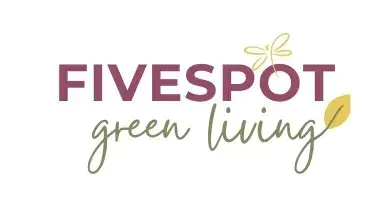Lavender Eczema Balm Recipe
Eczema can be a challenging skin condition to manage, but natural remedies often provide gentle and effective relief without harsh chemicals. One such remedy is a homemade Lavender Eczema Balm Recipe, which combines soothing ingredients with the calming properties of lavender essential oil. Lavender has been prized for centuries for its anti-inflammatory and skin-healing attributes, making it an ideal choice for irritated skin.
Natural Home Remedies offer a gentler approach to soothing eczema symptoms. This homemade lavender eczema balm combines the healing properties of grass-fed tallow, nourishing carrier oils, calming lavender, and protective beeswax to create a powerful yet gentle treatment for irritated skin.

Embrace Natural Skincare Solutions
Making your own lavender eczema balm gives you complete control over what you put on your skin. This easy-to-follow recipe leverages the proven benefits of natural ingredients to deliver gentle, effective relief from eczema symptoms.
Not only is it a cost-effective alternative to commercial treatments, but it also offers the peace of mind that comes with knowing exactly what’s in your skincare. Begin with small batches to see how your skin reacts, then scale up once you’ve perfected your ideal formula.

Effective Natural Home Remedies
- Home Remedies for Eczema
- Natural Skin Care
- Natural Remedies for Psoriasis
- Natural Eczema Remedies for Babies
Ingredients in this Eczema Salve
Grass-Fed Rendered Tallow: Grass-fed tallow is packed with essential nutrients like vitamins A, D, E, and K, as well as fatty acids that closely resemble the natural composition of our skin. This unique similarity enables tallow to deeply penetrate the skin, delivering long-lasting hydration without clogging pores. Additionally, its natural anti-inflammatory properties help soothe and calm irritated skin, making it a powerful, skin-friendly moisturizer.
Carrier Oils: High-quality carrier oils such as jojoba, sweet almond, and avocado oil provide deep nourishment while contributing to a smooth, luxurious texture. Jojoba oil, in particular, is highly effective for eczema, as its unique composition as a wax ester closely resembles the skin’s natural sebum.
Dried Lavender Flowers: For centuries, lavender has been cherished for its ability to calm and heal the skin. Its powerful anti-inflammatory and antimicrobial properties not only help reduce redness but also protect against secondary infections caused by scratching eczema-prone areas.
Beeswax: Beeswax serves as a natural emulsifier, forming a protective barrier on the skin to seal in moisture. It also gives the balm its firm structure while staying soft and smooth for effortless application.

Customizing Your Recipe
Customize this recipe to suit your skin’s unique needs and preferences:
- For ultra-sensitive skin: Swap lavender for calendula flowers, known for their extra gentle properties.
- To boost healing: Stir in a teaspoon of raw honey during the melting process.
- For a personalized scent: Replace lavender with chamomile flowers, or experiment with essential oils like tea tree (use sparingly) or geranium.
When selecting ingredients, prioritize quality. Choose grass-fed tallow from trusted suppliers, organic dried flowers, and pure, unfiltered beeswax to achieve the best results.

Healing Recipes for Eczema
- Easy Homemade Eczema Soap
- Homemade Oatmeal Lotion for Eczema
- The Easiest DIY Eczema Cream
- Homemade Oatmeal Soap for Eczema
Using and Storing Your Balm
Gently apply a small amount of balm to clean, slightly damp skin. Your body’s natural warmth will soften the balm, allowing for smooth and effortless application. Use 2-3 times daily or as needed during flare-ups.
To preserve its quality, store the balm in a cool, dry place away from direct sunlight. When properly stored, it will remain effective for 6-12 months. Always use clean hands or a small spatula to remove the balm from its container, ensuring it stays free from contamination.

Lavender Eczema Balm Recipe
Ingredients:
- 1/4 cup grass-fed rendered tallow
- 2 tablespoons carrier oil (jojoba, sweet almond, or avocado)
- 1 tablespoon dried lavender flowers
- 1 tablespoon beeswax pellets
- Optional: 5-10 drops lavender essential oil
Equipment:
- Double boiler or glass bowl and saucepan
- Fine mesh strainer or cheesecloth
- Small glass jars or tins for storage
- Wooden spoon for stirring
Instructions:
Step 1: Infuse the Oil
Combine the tallow, carrier oil, and dried lavender flowers in the top of a double boiler. Heat gently for 30-45 minutes, stirring occasionally. The mixture should be warm but not bubbling. This slow infusion extracts the beneficial compounds from the lavender.
Step 2: Strain the Mixture
Remove from heat and strain the oil mixture through a fine mesh strainer or cheesecloth to remove the lavender flowers. Press the flowers gently to extract as much oil as possible.
Step 3: Add Beeswax
Return the strained mixture to the double boiler and add the beeswax pellets. Heat gently until the beeswax is completely melted, stirring to combine.
Step 4: Final Touches
Remove from heat and let cool for 2-3 minutes. If using lavender essential oil, add it now and stir well.
Step 5: Pour and Cool
Quickly pour the mixture into clean glass jars or tins. Allow to cool completely at room temperature before covering. The balm will solidify as it cools.
